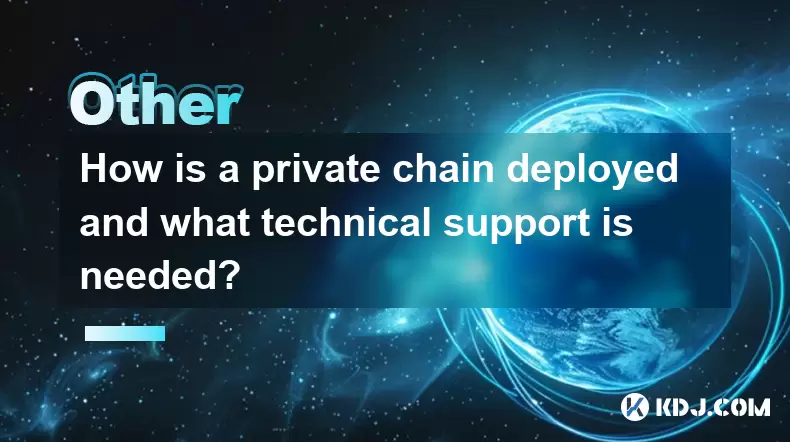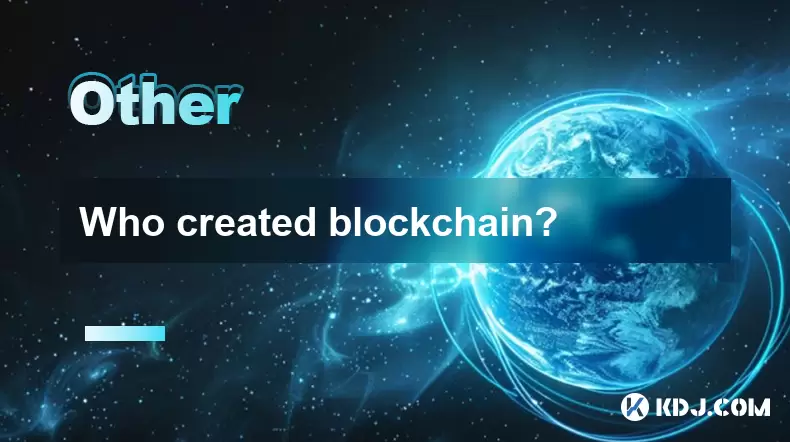-
 Bitcoin
Bitcoin $115200
-2.68% -
 Ethereum
Ethereum $3601
-5.16% -
 XRP
XRP $3.035
-2.96% -
 Tether USDt
Tether USDt $0.9997
-0.04% -
 BNB
BNB $764.5
-5.43% -
 Solana
Solana $168.1
-5.92% -
 USDC
USDC $0.9998
-0.02% -
 Dogecoin
Dogecoin $0.2090
-4.80% -
 TRON
TRON $0.3272
-0.49% -
 Cardano
Cardano $0.7306
-5.00% -
 Hyperliquid
Hyperliquid $39.16
-12.22% -
 Stellar
Stellar $0.3967
-4.96% -
 Sui
Sui $3.566
-5.95% -
 Chainlink
Chainlink $16.55
-6.57% -
 Bitcoin Cash
Bitcoin Cash $552.3
-3.90% -
 Hedera
Hedera $0.2516
-4.69% -
 Avalanche
Avalanche $21.99
-5.75% -
 Toncoin
Toncoin $3.621
-0.28% -
 Ethena USDe
Ethena USDe $1.000
-0.03% -
 UNUS SED LEO
UNUS SED LEO $8.951
0.02% -
 Litecoin
Litecoin $105.9
-3.59% -
 Shiba Inu
Shiba Inu $0.00001232
-5.00% -
 Polkadot
Polkadot $3.640
-5.55% -
 Uniswap
Uniswap $9.048
-7.03% -
 Monero
Monero $301.8
-1.51% -
 Dai
Dai $0.9999
-0.01% -
 Bitget Token
Bitget Token $4.334
-3.66% -
 Pepe
Pepe $0.00001064
-6.17% -
 Cronos
Cronos $0.1367
-5.78% -
 Aave
Aave $259.2
-4.59%
How is a private chain deployed and what technical support is needed?
Private chains offer enhanced privacy and control, ideal for businesses needing secure transaction environments and sensitive data management.
May 19, 2025 at 02:28 am

Introduction to Private Chain Deployment
Deploying a private blockchain involves setting up a network where only selected participants have access. This is particularly useful for businesses and organizations that require a secure and controlled environment for their transactions and data. Private chains offer enhanced privacy and control, making them ideal for internal operations and sensitive data management.
Understanding the Basics of Private Chains
A private chain, also known as a permissioned blockchain, is a type of blockchain where access is restricted to a select group of participants. This contrasts with public blockchains, which are open to anyone. In a private chain, the network's administrator has the authority to grant or deny access, ensuring that only trusted parties can join and interact with the network. This setup is beneficial for enterprises that need to maintain confidentiality and regulatory compliance.
Technical Requirements for Deploying a Private Chain
Deploying a private chain requires specific technical infrastructure and expertise. The following are essential components:
- Nodes: These are the computers that run the blockchain software. Each node in a private chain must be configured to connect only to other authorized nodes.
- Blockchain Platform: Choosing the right platform is crucial. Popular options include Hyperledger Fabric, Ethereum (with private network settings), and Corda. Each platform has its own set of features and requirements.
- Network Security: Since private chains handle sensitive data, robust security measures are necessary. This includes firewalls, encryption, and secure communication protocols.
- Consensus Mechanism: Unlike public blockchains, private chains can use more efficient consensus mechanisms like Practical Byzantine Fault Tolerance (PBFT) or Raft, which are better suited for smaller, trusted networks.
Step-by-Step Guide to Deploying a Private Chain
Deploying a private chain involves several detailed steps. Here is a comprehensive guide to help you through the process:
- Choose a Blockchain Platform: Select a platform that aligns with your organization's needs. For example, if you need a highly customizable solution, Hyperledger Fabric might be the best choice.
- Set Up the Environment: Install the necessary software and dependencies on your nodes. This may include Docker, Node.js, or other platform-specific requirements.
- Configure the Network: Define the network topology and configure each node to connect to the others. This involves setting up the network's communication protocols and ensuring that all nodes can communicate securely.
- Create and Distribute Certificates: In a private chain, participants need to be authenticated. Generate and distribute digital certificates to each node to ensure secure and verified communication.
- Deploy the Blockchain: Use the platform's deployment tools to initialize the blockchain. This may involve running specific commands or scripts provided by the platform.
- Test the Network: Before going live, thoroughly test the network to ensure that all nodes are functioning correctly and that transactions are being processed as expected.
- Implement Governance Policies: Establish rules and policies for network management, including access control, transaction validation, and dispute resolution.
Technical Support Needed for Private Chain Deployment
Deploying and maintaining a private chain requires ongoing technical support. Key areas of support include:
- Blockchain Developers: Experts in the chosen blockchain platform are essential for customizing the network, developing smart contracts, and troubleshooting issues.
- Network Administrators: These professionals manage the nodes and ensure the network's stability and security. They are responsible for monitoring network performance and implementing updates.
- Security Specialists: Given the sensitive nature of data on private chains, security experts are crucial for implementing and maintaining robust security measures.
- Compliance Officers: Ensuring that the private chain adheres to relevant regulations and standards is vital. Compliance officers help navigate legal and regulatory requirements.
Common Challenges and Solutions in Private Chain Deployment
Deploying a private chain can present several challenges. Here are some common issues and their solutions:
- Scalability: Private chains can struggle with scalability as the number of participants grows. To address this, consider using sharding or other scaling solutions provided by the blockchain platform.
- Interoperability: Integrating a private chain with existing systems or other blockchains can be complex. Use APIs and middleware to facilitate communication between different systems.
- Cost Management: The initial setup and ongoing maintenance of a private chain can be costly. Carefully plan your budget and consider cloud-based solutions to reduce infrastructure costs.
- User Adoption: Encouraging users to adopt the new system can be challenging. Provide comprehensive training and support to ensure a smooth transition.
Frequently Asked Questions
Q: Can a private chain be converted to a public chain later?
A: While it is technically possible to transition from a private to a public chain, it is a complex process that requires significant changes to the network's architecture and governance. It involves opening up access to the public, which may not be feasible or desirable for all organizations.
Q: How do you ensure data privacy on a private chain?
A: Data privacy on a private chain is maintained through several measures, including encryption of data at rest and in transit, access control mechanisms, and the use of private channels for sensitive transactions. Additionally, the network's permissioned nature ensures that only authorized participants can access the data.
Q: What are the costs associated with maintaining a private chain?
A: The costs of maintaining a private chain include infrastructure costs (servers, storage, and networking equipment), personnel costs (developers, administrators, and security experts), and potential licensing fees for the blockchain platform. Ongoing maintenance and upgrades also contribute to the total cost.
Q: How can a private chain be integrated with existing enterprise systems?
A: Integration with existing systems can be achieved through APIs and middleware that allow the private chain to communicate with other systems. For example, using RESTful APIs or message queues can facilitate data exchange between the blockchain and enterprise applications. Additionally, some blockchain platforms offer specific tools for integration with popular enterprise software.
Disclaimer:info@kdj.com
The information provided is not trading advice. kdj.com does not assume any responsibility for any investments made based on the information provided in this article. Cryptocurrencies are highly volatile and it is highly recommended that you invest with caution after thorough research!
If you believe that the content used on this website infringes your copyright, please contact us immediately (info@kdj.com) and we will delete it promptly.
- Cardano Price, Pi Network, and Crypto Presales: What's the Buzz?
- 2025-08-02 08:50:12
- XRP Fund Success: Teucrium CEO Reveals Trillions on the Horizon
- 2025-08-02 09:10:12
- Challenge Coins: More Than Just Collectibles – A Military Tradition
- 2025-08-02 08:30:12
- Under the Radar: Hunting for 100x Crypto Gems in a Pi Network World
- 2025-08-02 08:30:12
- Bitcoin, Solana, and Altcoin Season: What's Hot and What's Not?
- 2025-08-02 07:10:12
- Toncoin, Rollblock, and the Token Offering Landscape: A New York Minute
- 2025-08-02 07:10:12
Related knowledge

What is the difference between a blockchain and a database?
Aug 01,2025 at 09:36pm
Understanding the Core Structure of a BlockchainA blockchain is a decentralized digital ledger that records data in a series of immutable blocks linke...

What is a hash in a blockchain?
Aug 02,2025 at 05:28am
Understanding the Concept of Hash in BlockchainA hash in the context of blockchain technology refers to a unique digital fingerprint generated by a cr...

What is a hash in a blockchain?
Aug 02,2025 at 04:43am
Understanding the Concept of Hash in BlockchainA hash in the context of blockchain technology refers to a unique digital fingerprint generated by a cr...

Who created blockchain?
Aug 02,2025 at 05:15am
What Is Blockchain and Why Does Its Origin Matter?Understanding who created blockchain begins with recognizing what blockchain actually is. Blockchain...

How to start a business using blockchain?
Jul 28,2025 at 12:36am
Understanding the Basics of Blockchain TechnologyBefore diving into the process of starting a business using blockchain, it's crucial to understand wh...

What is a token on the blockchain?
Jul 21,2025 at 07:00am
Understanding the Concept of a TokenIn the realm of blockchain technology, a token is a digital representation of an asset or utility that exists on a...

What is the difference between a blockchain and a database?
Aug 01,2025 at 09:36pm
Understanding the Core Structure of a BlockchainA blockchain is a decentralized digital ledger that records data in a series of immutable blocks linke...

What is a hash in a blockchain?
Aug 02,2025 at 05:28am
Understanding the Concept of Hash in BlockchainA hash in the context of blockchain technology refers to a unique digital fingerprint generated by a cr...

What is a hash in a blockchain?
Aug 02,2025 at 04:43am
Understanding the Concept of Hash in BlockchainA hash in the context of blockchain technology refers to a unique digital fingerprint generated by a cr...

Who created blockchain?
Aug 02,2025 at 05:15am
What Is Blockchain and Why Does Its Origin Matter?Understanding who created blockchain begins with recognizing what blockchain actually is. Blockchain...

How to start a business using blockchain?
Jul 28,2025 at 12:36am
Understanding the Basics of Blockchain TechnologyBefore diving into the process of starting a business using blockchain, it's crucial to understand wh...

What is a token on the blockchain?
Jul 21,2025 at 07:00am
Understanding the Concept of a TokenIn the realm of blockchain technology, a token is a digital representation of an asset or utility that exists on a...
See all articles

























































































